2017 Pipelines: Drugs to watch
Posted: 12 April 2017 | Alexandra Kibble (Senior Editor - Clarivate Analytics Cortellis) | 1 comment
The annual Drugs to Watch report forecasts that eight new drugs will enter the market in 2017 and achieve blockbuster sales of more than $900 billion by 2021…


Eight new drugs will enter the market in 2017 and achieve blockbuster sales of >$900 billion by 2021, according to consensus sales forecast data from Clarivate Analytics Cortellis Competitive Intelligence.
Six of these have been filed with a form of expedited regulatory review, including Breakthrough designation, Priority Review or Fast Track status, four of them are biologicals and four are for cancer. Two are also first in class.
Ranked by highest sales forecast for 2021, the expected blockbuster 2017 launches are Roche’s Ocrevus (ocrelizumab) for multiple sclerosis (MS), Regeneron and Sanofi’s Dupixent (dupilumab) for allergic conditions, AstraZeneca’s durvalumab for cancer, Novo Nordisk’s semaglutide for type 2 diabetes, Eli Lilly and Incyte’s Olumiant (baricitinib) for rheumatoid arthritis (RA), Novartis’ ribociclib for cancer, Merck Serono and Pfizer’s avelumab for cancer and Tesaro’s niraparib for cancer. Kite Pharma’s KTE-C19 for haematological cancer, while not yet quite reaching blockbuster status, is included in this report for the interest it is generating among industry observers.
| # | Drug | Indication | Company | 2021 forecast sales (US$ billions) |
1 | Ocrevus (ocrelizumab) | Multiple sclerosis | 3,327.80 | |
2 | Dupixent (dupilumab) | Allergic conditions, primarily atopic dermatitis | 2,808.20 | |
3 | Durvalumab | Cancer, primarily lung, bladder and head & neck cancer | 2,055.90 | |
4 | Semaglutide | Type 2 diabetes | 1,937.56 | |
5 | Olumiant (baricitinib) | Rheumatoid arthritis | 1,282.50 | |
6 | Ribociclib (LEE-011) | Cancer, primarily breast cancer | 1,277.70 | |
7 | Avelumab | Cancer, primarily Merkel cell carcinoma and lung | Merck Serono and Pfizer | 1,229.60 |
8 | Niraparib | Cancer, primarily ovarian cancer | 1,078.70 | |
9 | Axicabtagene ciloleucel (KTE-C19) | Hematological cancer, primarily non-Hodgkins lymphoma | 917.5 |
1. Ocrevus for multiple sclerosis


Topping the ranking for 2017’s blockbusters by 2021 sales is Roche’s Ocrevus, which is expected to materially disrupt the MS market when it launches in 2Q17. The MS market is a fascinating one, as it has been transformed by oral options since 2010, yet older injectable mainstays such as the interferons have ceded market share relatively slowly. The first generics (eg Momenta’s glatiramer generic, Glatopa) have not altered the market to much extent, but the first oral generics are on the horizon which will have a greater impact. Despite this maturing market, significant need remains for treatment options with novel mechanisms and an optimal combination of improved potency, tolerability and convenience.
Ocrevus is a first-in-class anti-CD20 antibody which met its endpoints in two pivotal trials in relapsing remitting MS (OPERA 1 & 2) according to data reported in 2015. Compared with Rebif (recombinant interferon beta-1a), Ocrevus reduced the annualised relapse rate by 47% at week 96, with secondary endpoints also met, including delayed confirmed disability progression and reduced new brain lesions; safety and tolerability data were favourable. Perhaps more interestingly, the drug is also the first ever to prove effective in primary progressive MS, as seen in the ONTARIO trial where the risk of progression of clinical disability was reduced by 24%. Initial market share gains are likely in the second line behind oral options and in severe patients on Tysabri (natalizumab) who are at risk of progressive multifocal leukoencephaolopathy, but adoption in naive patients may be expected in the medium term as prescriber familiarity builds.
The drug received Breakthrough Therapy Designation in February 2016, with its marketing applications under review by the EMA and FDA later on last year.
2. Dupixent for dermatitis


Regeneron’s IL-4 alpha subunit inhibitor Dupixent was successful in several phase III studies in its first development setting of atopic dermatitis (AD), and is expected to launch in 2Q17 shortly after its PDUFA date of March 29. In the SOLO-1 & 2 trials in mild to moderate AD patients inadequately controlled with topical medications, 37 and 36% patients saw clearance or near clearance of skin lesions at 16 weeks, respectively. Co-administration with a corticosteroid was also superior to corticosteroid therapy alone (39 versus 12%).
These strong short-term outcomes, combined with the lack of existing treatment options, are expected to drive wide adoption, despite the unfamiliar mechanism of action. A phase II trial in paediatric patients is also completing; unmet need in this setting is particularly notable, and approval in paediatrics would drive upside. Benefit has also been seen in phase III trials in eosinophilic asthma, although severe asthma is a competitive space and the impact of approval in this setting does not appear clear cut.
3. Durvalumab for cancer


The first BLA filing for AstraZeneca’s PD-L1 antibody durvalumab was accepted in December 2016 in bladder cancer, and through Priority Review it is now expected to launch in 2H17. While the drug will provide a meaningful treatment option in the bladder cancer setting, it is in lung cancer where the most notable sales are expected.
AstraZeneca had initially aimed to be entering the lung cancer market in 2016, through its ATLANTIC study in the third-line non-small-cell lung cancer (NSCLC) setting, but the company was delayed when monotherapy data were not strong enough to warrant continued development in the third line. However, positive early-stage data in the first line led to the initiation of the MYSTIC phase III trial in front-line NSCLC, comparing the drug in combination with tremelimumab against standard of care. A read out for MYSTIC is expected in mid-2017, which could set the stage for a filing by the end of the year. The failure of heavyweight competitor Opdivo (nivolumab) in first-line NSCLC in 2016, together with Merck apparently playing it safe with Keytruda (pembrolizumab) by seeking approval in the first line only in high PD-L1 expressers could mean big wins for durvalumab, despite being later to market. Therefore much hinges on MYSTIC, and although many view the trial as riskier than typical phase III trials, success would bring the company one of its major growth drivers for the coming years.
4. Semaglutide for diabetes
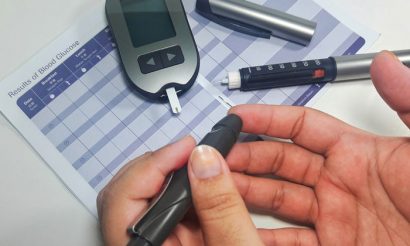

Novo Nordisk’s weekly GLP1 analog semaglutide was filed in December 2016 based on positive data from the SUSTAIN program in type 2 diabetes, and launch is expected by year-end 2017. SUSTAIN data showed a potent ability to control HbA1 across all stages of the treatment paradigm, as well as a robust weight-loss effect with statistical superiority to Januvia (sitagliptin) in SUSTAIN-2, to Bydureon (controlled-release exenatide) in SUSTAIN-3 and to Lantus (insulin glargine) in SUSTAIN-4. It also improved cardiovascular outcomes, according to the SUSTAIN-6 trial, reducing stroke risk by 39% and myocardial infarction risk by 26%.
Assuming approval, semaglutide will be the fourth weekly GLP-1 analog to market, behind Trulicity (dulaglutide), Tanzeum (albiglutide) and Bydureon, however it is Novo’s once daily oral formulation of the drug which may be expected to be practice changing in type 2 diabetes. After encouraging phase II data, Novo Nordisk began the phase III PIONEER studies of oral semaglutide in 2016, the first of which is expected to read out in 2018. Success could mean earlier switching from small molecule oral antidiabetics, which would have significant market implications.
5. Olumiant for rheumatoid arthritis


The next-generation JAK inhibitor Olumiant from Lilly and Incyte was filed for RA with the FDA in January 2016, but did not reach the market in 2016 due to an extension of the PDUFA date associated with a new data analysis which was requested by the FDA. Data from the pivotal phase III trial program suggest best-in-class efficacy, although it is still expected to be given the class label warning of risk of infection. The European Commission granted marketing authorisation for the drug in February 2017.
Positive data have been reported in methotrexate-naive patients (RA-BEGIN), DMARD failures (RA-BEAM, RA-BUILD) and inadequate responders to anti-TNFs (RA-BEACON), and the drug has proven superior to Humira (adalimumab) on several metrics. Market share gain may be initially expected to come at the expense of other JAK inhibitors, primarily Xeljanz (tofacitinib), but with building prescriber familiarity the drug could move ahead of TNF inhibitors in the treatment paradigm.
6. Ribociclib in cancer


Novartis’ ribociclib, a highly selective CDK4/CDK6 inhibitor, was granted a Priority Review by the FDA in November 2016 for HR-positive, HER2-negative first-line breast cancer, and the drug was launched in the US in March 2017.
The drug is behind Pfizer’s CDK4/6 inhibitor Ibrance (palbociclib), a strong competitor which was launched in early 2015. Novartis reported pivotal data from its MONALEESA-2 trial of ribociclib in October 2016, which showed an overall response rate of 41% when dosed with letrozole versus 28% for letrozole alone. In terms of clinical activity, ribociclib appears similar to Ibrance, and with such similar profiles, it may be difficult for ribociclib to displace Ibrance. To help differentiate the drug, Novartis has initiated MONALEESA-7 to evaluate ribociclib plus tamoxifen and goserelin in pre- and peri-menopausal women, which is a unique indication setting from any other CDK4/6 inhibitor in development.
7. Avelumab for cancer
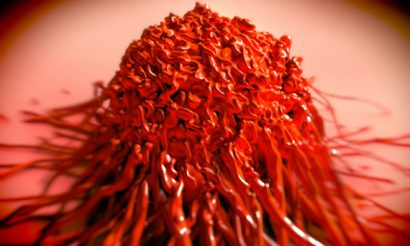

Pfizer’s avelumab is a fully human anti-PDL1 antibody expected to enter the market in 3Q17 in its first cancer setting of second-line metastatic Merkel cell carcinoma; the drug has shown a tumour response in 31.8% of patients which is a potential breakthrough in this challenging disease. However, as the leading checkpoint inhibitor in ovarian cancer and the first to enter phase III trials in this setting, it is this market that is expected to garner most sales.
Pfizer is currently conducting JAVELIN Ovarian 200, a phase III study in platinum-resistant/refractory ovarian cancer evaluating the drug as a single agent and in combination with doxorubicin. In May 2016, a further phase III trial (JAVELIN Ovarian 100) was initiated in first-line ovarian cancer to assess the drug given in the maintenance setting following front-line platinum chemotherapy, or in combination with a platinum doublet versus chemotherapy alone. The trials are expected to read out in 2018 and 2019, respectively.
8. Niraparib in cancer


Ovarian cancer presents the first commercial opportunity for TESARO’s PARP inhibitor niraparib, and an NDA was accepted for Priority Review in December 2016 directing to a 3Q17 launch. The drug succeeded in the second-line maintenance setting in the phase III NOVA trial, with a reduction in risk of progression versus placebo of 73% and a median progression-free survival (PFS) of 21 versus 5.5 months. Notably, niraparib also improved PFS in BRCA-negative patients (12.9 versus 3.8 months), which would allow use in a much larger population than targeted by competitor Lynparza (olaparib). A study in front-line platinum responders (QUADRA) is also ongoing.
9. KTE-C19 in cancer
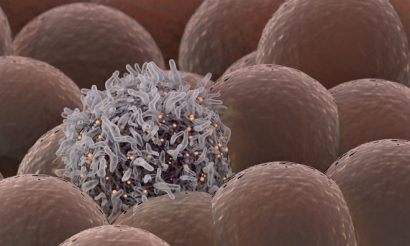

T-cells engineered against cancer antigens (CAR-T) are generating perhaps the most excitement in the industry at the moment. Kite Phama is hopeful it can be the first company to bring a CAR-T therapy to market with KTE-C19, following the initiation of a rolling filing in aggressive B-cell non-Hodgkin’s lymphomas (NHL) in December 2016, and the company hopes to launch the drug at the very end of 2017.
KTE-C19 is an autologous T-cell therapy expressing a cancer antigen specific for CD19, which is a B cell marker. The pivotal ZUMA-1 study supporting the submission enrolled patients with chemorefractory diffuse large B-cell lymphoma, transformed follicular lymphoma and primary mediastinal B-cell lymphoma – three subtypes of aggressive NHL. ZUMA-1 demonstrated a striking objective response rate of 82% and a complete remission rate of 54%, when dosed following a conditioning regimen of fludarabine and cyclophosphamide. A number of other studies are ongoing or planned in mantle cell lymphoma (ZUMA-2), adult and paediatric acute lymphocytic leukaemia (ZUMA-3 & 4), indolent NHL (ZUMA-5) and chronic lymphocytic leukaemia (ZUMA-8). Early market access may depend initially on building scientific awareness among prescribers, and an efficient and consistent manufacturing process.
Alexandra Kibble is a senior editor within the Clarivate Analytics Cortellis team. She has a PhD in neurology, and has built nearly 20 years of industry experience through working on the varied pharmaceutical intelligence products within the company. Her work currently involves conducting market-based analyses and sales forecasting for strategic drugs, and her main interests lie in international pricing and reimbursement, and market access strategies.
Related topics
Related organisations
AstraZeneca, Incyte Corporation, Merck Serono, Novartis, Novo Nordisk, Pfizer, Regeneron Pharmaceuticals, Roche, Sanofi, Tesaro




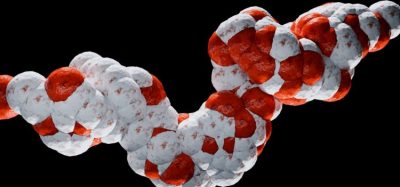

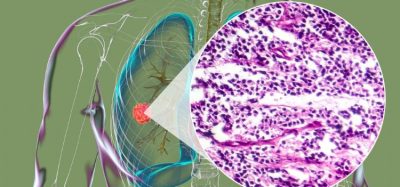



I am a patient of lung fibrosis from developing country .
Developed countries have estimated 600000 new patients every year
This does not include India ,china , Far East ( except Japan , South Korea )
Middle East and afrika .
Under developed countries and even developing countries has neither resources and expertise to diagnose the disease 100 percent advance stage in
95 percent of population and remote areas where even primary healthcare facilities not available .
Recent study conducted by usa medical Authourities that Middle East countries will have approximately 60 millions patients of lung diseases by 2020.
This sector is ignored by MNC and Govt of advanced countries .
This segment can give market of usd 50 billions by 2025